Last updated: May 25, 2018
Article
What’s That Buzz? Documenting Pollinator Diversity in North Cascades and Olympic National Parks
Most flowering plants rely on insect pollinators for successful reproduction. This means that further up the food chain, many plant-feeding animals (like bears, goats, elk) are also dependent on insect pollinators for their well-being. Surprisingly, even though we know that insect pollinators are essential for the healthy functioning of wild ecosystems in our national parks, park scientists, resource managers, and visitors know relatively little about the diversity of native insect pollinators, where they live, or which plants they feed on.
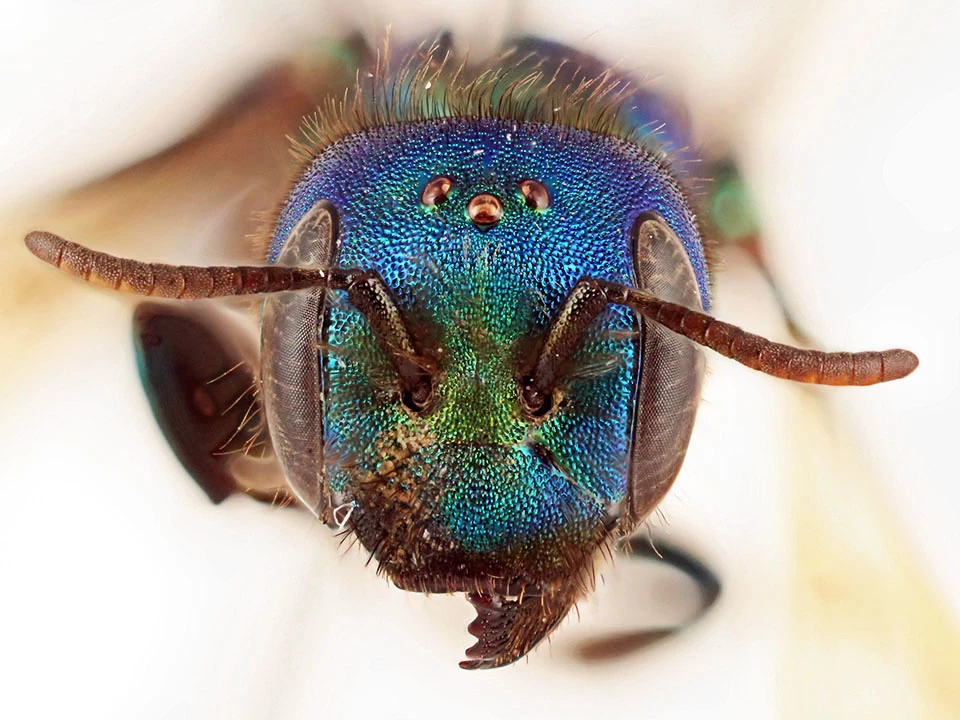
NPS / Jessica Rykken

NPS / Jessica Rykken
Another thing we do know about pollinators is that some populations are in dramatic decline, and that human-caused threats such as habitat loss, introduced pathogens, pesticides, and climate change are likely driving these losses. Declines of honey bees, which have served as agricultural workhorses in the U.S. since their introduction from Europe in the 17th century, have received a lot of public attention for more than a decade. More recently, the native rusty-patched bumble bee received the dubious honor of being the first bee listed as endangered under the Endangered Species Act. However, for the vast majority of insect pollinators, including nearly 4,000 native bee species and untold numbers of other insects, we aren’t even sure which species “should” live in a healthy landscape, let alone which species may be in decline.
These are urgent reasons for learning more about our native pollinators. National parks provide a natural laboratory where we can document patterns of pollinator diversity and measure change in these patterns over time. North Cascades and Olympic are iconic national parks that encompass a broad diversity of habitats, from coastal forests to high alpine meadows, and thus provide an ideal opportunity to establish baseline information on pollinator diversity and distribution in the Pacific Northwest.

NPS / Jessica Rykken
We designed a study to document the diversity of two very important groups of insect pollinators in North Cascades and Olympic: bees and flower flies (family Syrphidae). One of our primary goals was to compare pollinators in low versus high elevation habitats across both parks. Because impacts from climate change are presumed to be more pronounced at high elevations, pollinator communities in subalpine and alpine zones may be especially vulnerable to changes in temperature and moisture, and thus could serve as effective indicators of overall ecosystem health.
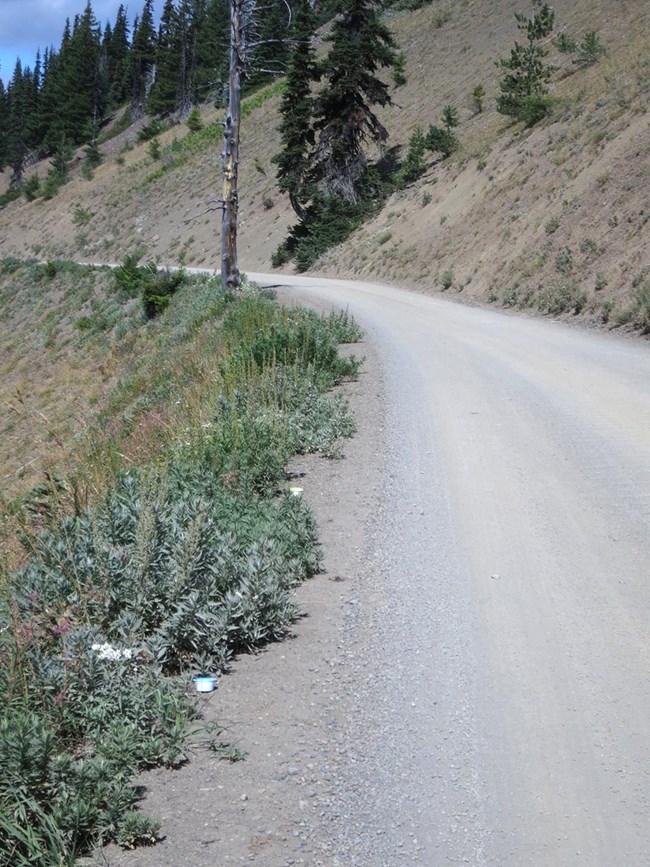
NPS / Jessica Rykken
How We Collected Insect Pollinators
Most of our collections were made in August, 2014, although a few samples were taken earlier and later in the season. We selected multiple sampling sites at various elevations in each park. The lowest sites were on ocean beaches, mowed lawns, and riparian areas of larger rivers (Hoh and Skagit Rivers); mid-elevation sites included forest openings, trails, lake edges, and meadows; the highest elevation sites were subalpine meadows in both parks. Our highest site in Olympic was along Lillian Ridge Trail (1,934 m) and in North Cascades was at Maple Pass (2,023 m). We also sampled along park roads at all elevations.
To collect bees and flower flies, we used a combination of handheld “butterfly” nets and small traps called “bee bowls.” Bee bowls are small plastic cups painted yellow, blue, and white to mimic flower blooms. Pollinators come to investigate the water-filled cups and get stuck inside. Bee bowls are generally laid out in transects of 30 cups, with cups spaced 5 meters apart.

NPS / Jessica Rykken
Active collecting with a net allows you to associate an insect with the flower it is feeding on, or its nesting site. However, net collecting requires some skill and practice. The benefit of using a passive trap such as a bee bowl is that the trap can be set out for a longer period of time and anyone can do it. However, it is impossible to know where the trapped specimens were feeding or nesting. Using both collecting methods provides the most comprehensive information.
What We Found
Bumble bees
Bumble bees were by far the most commonly collected bees; across the two parks, 14 species made up almost half of the total bee catch (1,890 bees). Two species were abundant in both parks: the forest bumble bee (Bombus sylvicola) and the yellowhead bumble bee (B. flavifrons). Bumble bees are well-adapted to the cold climates of mountainous parks because of their large body size, long, dense fur, and ability to warm their thoracic muscles through “shivering” which allows them to fly at lower temperatures than most insects. Bumble bees typically collect nectar and pollen from many kinds of flowers which is also a good adaptation in alpine systems where the flowering season is relatively short. Most bumble bees don’t need to cope with low winter temperatures, only the newly-mated queens overwinter, the rest of the colony dies at the end of the growing season.
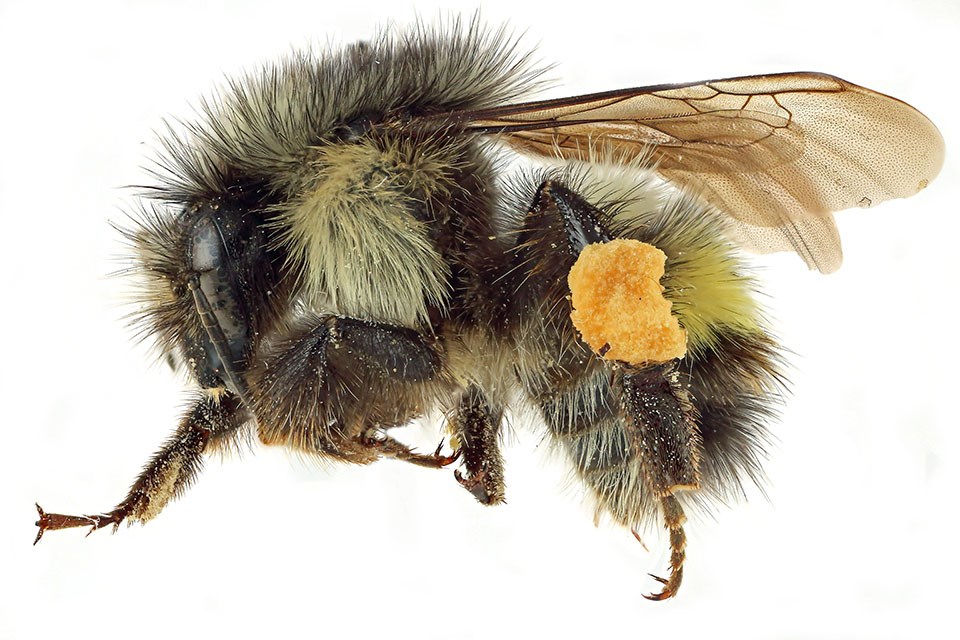
NPS / Jessica Rykken
Other bees
Besides bumble bees, we found many other kinds of bees, including solitary, cuckoo, and social bees. These included bees that nest in the soil (e.g., mining bees—Andrena, Panurginus; sweat bees—Halictus, Lasioglossum; and polyester bees—Colletes); bees that nest in stems and twigs (e.g., small carpenter bees—Ceratina, and masked bees—Hylaeus); bees that nest in pre-existing cavities (e.g., leafcutter bees—Megachile, and mason bees—Hoplitis, Osmia); and several genera of cuckoo bees (Nomada, Sphecodes, Coelioxys, Stelis) who lay their eggs in the nests of other bees.
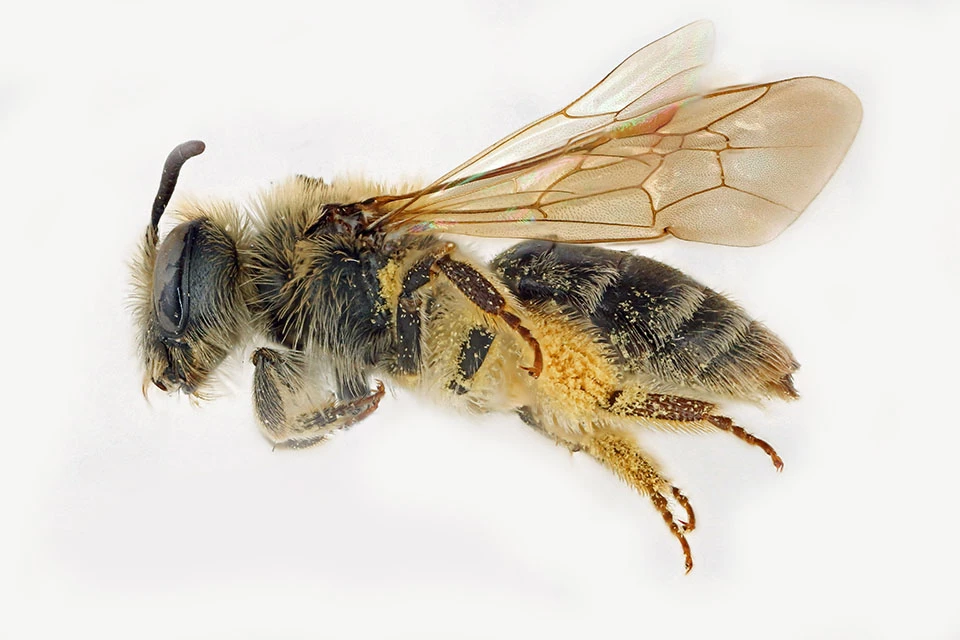
NPS / Jessica Rykken

NPS / Jessica Rykken
Flower flies
Flower flies (Family Syrphidae) made up a relatively small proportion (13-14%) of the total pollinator catch in both parks, but they were comparatively much more diverse than bees (29 genera versus 20 genera for bees). Most flower flies are bee or wasp mimics, fooling predators into thinking they can sting in self-defense. Like bees, flower flies visit flowers to feed on nectar and pollen, but unlike bees, females do not take these food resources back to a nest to feed to their young. Instead, flower fly larvae are free-living and have to feed themselves. Species of one major group of flower fly larvae are predators on aphids, other species feed on plant tissue or decaying wood or organic material in aquatic habitats. Globetails (Sphaerophoria) were the most diverse flower fly group in both parks (4-6 species).

NPS / Jessica Rykken

NPS / Jessica Rykken
Elevation specialists
In our survey, habitats above and below tree line shared many pollinator species (36% in in North Cascades; 43% in Olympic). However, several species of bees and flower flies were strongly associated with higher elevations. For example, the abundant forest bumble bee, Bombus sylvicola, occurred only at sites between 1,113 and 2,023 meters in both parks. The tiny masked bee, Hylaeus annulatus, was far less abundant but occurred at 17 sites within the same elevational range as B. sylvicola. Among syrphid flies, Sericomyia chalcopyga, Blera scitula, Syrphus torvus, and the Sphaerophoria abbreviata/asymmetrica group were also restricted to higher elevations in this study.
Species of concern
We collected five specimens of the Western bumble bee, Bombus occidentalis, in Olympic, a species known to be in dramatic decline in other parts of Washington, Oregon, and northern California. Bombus occidentalis was extremely common on the west coast of the
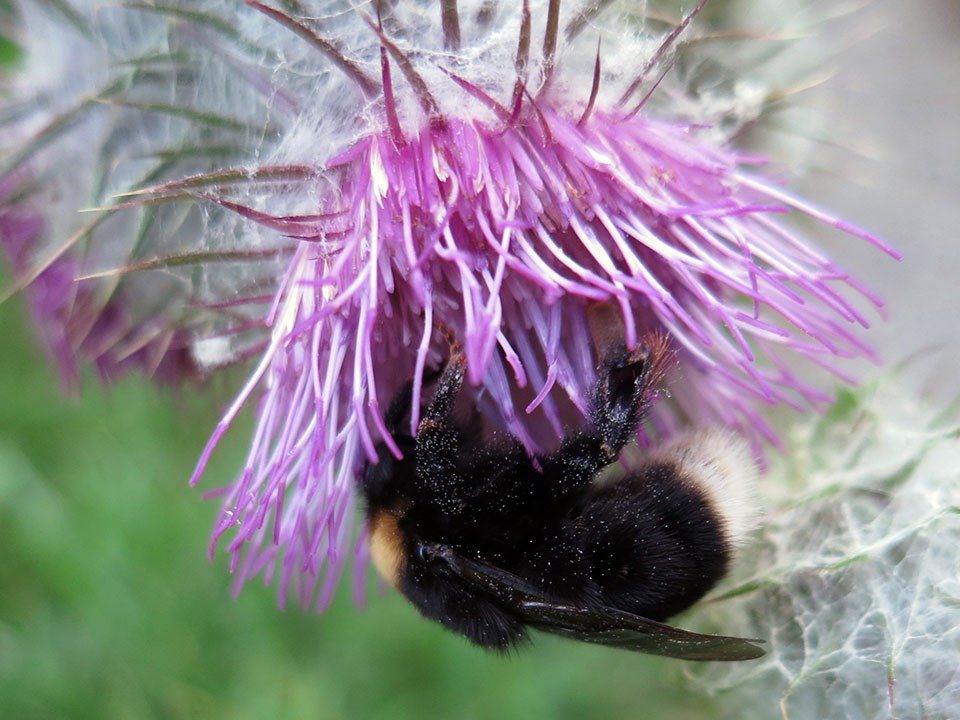
NPS / Jessica Rykken
In Olympic, we collected the Western bumble bee in Badger and Grand Valleys, in the northeast section of the park, and J.D. Herndon collected one specimen at Heather Lake in the southeastern part of the park. Jamie Strange and Jon Koch from the USDA Agriculture Research Service documented B. occidentalis in Royal Basin, and more recently, near Obstruction Point (pers. comm). These collections point to Olympic being an effective refuge for this at-risk species.
Threats to Pollinators and the Need for Monitoring
One of the most urgent threats facing montane ecosystems in protected areas is climate change. Plants and their pollinators living at high elevations with short growing seasons and extreme climates have evolved a variety of adaptations and behaviors to survive such conditions. One danger is that host plants and their pollinators will respond to climate change at different rates, so that the timing of flowering will no longer coincide with pollinator activity. For example, flowers may bloom earlier in the season, before bees typically emerge from their nests to forage—leaving the flowers unable to reproduce successfully, while bees go hungry later in the season.
Pollinators may also shift their ranges in response to climate change. Current research with bumble bees is showing that while southern species are moving northwards or higher in elevation to counteract warming temperatures, northern species are not expanding their ranges northwards or upslope—thus their ranges are shrinking overall (Kerr et al. 2015).
As the body of research looking at effects of climate change on pollinators grows, especially in alpine and northern ecosystems, one common conclusion is that structured pollinator survey and monitoring is imperative. One of the outcomes of this project has been to suggest locations for a network of permanent sites in Olympic and North Cascades National Parks for future monitoring, as well as develop a set of detailed sampling protocols, as has been done for the Cascade Butterfly Project.
For More Information
Project Report
Rykken J. 2018. Measuring and monitoring pollinator diversity along elevation gradients in Olympic and North Cascades National Parks. Natural Resource Report. NPS/NOCA/NRR—2018/1634. National Park Service. Fort Collins, Colorado
Further Reading
Colla, S.R., M.C. Otterstatter, R.J. Gegear, and J.D. Thomson. 2006. Plight of the bumble bee: pathogen spillover from commercial to wild populations. Biological Conservation 129:461-467.
Kerr, J.T., A. Pindar, P. Galpern, L. Packer, S.G. Potts, S.M. Roberts, P. Rasmont, O. Schweiger, S.R. Colla, L.L. Richardson, D.L. Wagner, L.F. Gall, D.S. Sikes, and A. Pantoja. 2015. Climate change impacts on bumblebees converge across continents. Science 349:177-180.
